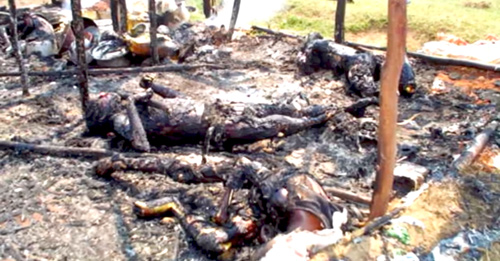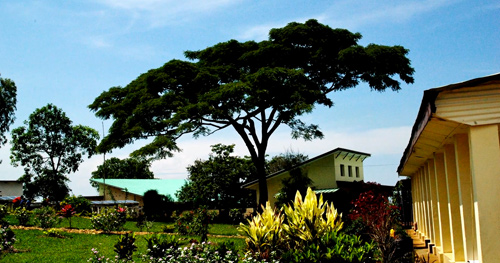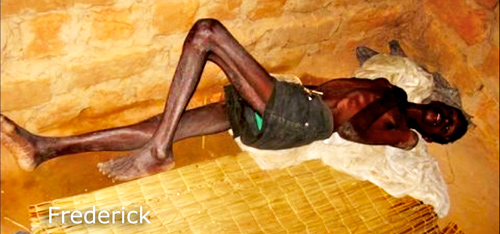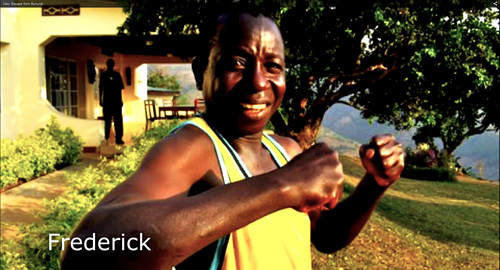Most of us remember the Rwandan genocide, in which ethnic Hutus slaughtered 500,000 to a million ethnic Tutsis between April 7 and July 15, 1994. Less well known is the genocide a year earlier in the neighboring East African country of Burundi where 300,000 Tutsis perished.
A new documentary, Deo: Escape from Burundi, by former Bolinas resident Ole Schell tells what happened in Burundi and how one moneyless survivor managed to escape to the United States, learn English, graduate from the Harvard School of Medicine, and then return to his former village where he organized the creation of a health center. (Click here to watch the 20-minute video)
The filmmaker is the son of Ilka Hartmann of Bolinas, a renowned documentary photographer. As it happened, Deo Niyizonkiza, the survivor, visited Napa, and she shot some still photos of him that are included in the documentary. Ole’s father is Orville Schell, former dean of the Graduate School of Journalism at U.C. Berkeley and now director of the Center on U.S.-China Relations at the Asia Society in New York.
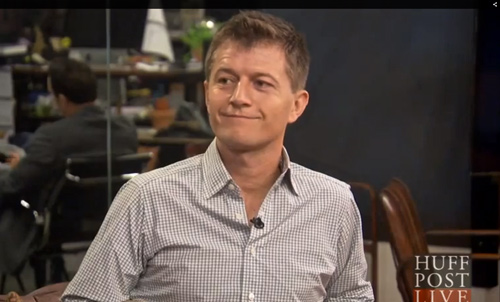
Ole Schell was interviewed last Thursday on Huffington Post Live about his new documentary, Deo: Escape from Burundi. (Click here to watch interview)
The massacre of Tutsis by ethnic Hutus was not the result of a centuries-old animosity, as many of us had assumed. The real culprit in the bloodshed was Belgium in the 20th century, Ole says. At the end of the 19th century, Germany colonized Burundi and Rwanda but after its defeat in World War I was forced to cede them to Belgium.
Although the Hutu and Tutsi spoke the same language, the Belgians officially separated them as part of a policy of “divide and conquer,” Ole says in his Huffington Post interview.

Belgian colonist measuring noses to decide who was a Hutu and who was a Tutsi.
“They would measure people’s noses, cheekbones, and height and declare some people Hutus and some people Tutsis,” Ole told the Huffington Post. “It was almost arbitrary. Some people in the same family would be a Tutsi and some would be a Hutu.
“It really didn’t make much sense, but it took hold and got in the psyche of the people.” The result was a series of genocides perpetuated by both sides.
The genocide in 1993 grew out of a 1972 rebellion when Hutu members of the gendarmerie (soldiers with police duties) tried to estabish a new republic, killing thousands of Tutsis, as well as any Hutus who wouldn’t join the insurrection. In response, Burundi’s president, a Tutsi, declared martial law, and 80,000 to 210,000 Hutus were slaughtered.
In 1993, Tutsi soldiers assassinated Burundi’s first democratically elected head of state, a Hutu, and civil war broke out in within a day.

Deo Niyizonkiza, the survivor and central character of the documentary, was a 20-year-old medical student in Burundi when the slaughter began. Ole’s video relates how narrowly Deo, a Tutsi, escaped machete-wielding Hutu militiamen.
Deo’s entire odyssey is inspiring. When he was young, he says, a class might start the school year with 50 or 60 students. Only half that many would start the next year, the others having died mostly from curable diseases. There was no medical care whatsoever in his rural village and none in the area.
So he decided to study medicine. He moved to a city and was at work in a hospital when word came that the president had been killed and that Hutu militias were killing every Tutsi they could find.

Members of a Hutu militia.
Militiamen could be heard entering the hospital and killing people either with machetes or by burning them alive. Deo ran to his room and hid under the bed. In his haste, however, he forgot to lock the door.
Ironically, that saved him. A militiaman opened the door, looked around the room, and remarked, “….That cockroach [insulting slang for Tutsi] is gone.” He then left.

Tutsis burned alive by Hutu militia.
When the militiamen finally left, there were piles of bodies everywhere. Because flesh had been burned, the smell of meat was in the air, Deo recalled.
He escaped into the woods and walked for days to reach Rwanda where a Hutu woman got him into the country by telling soldiers he was her son. After six months in Rwanda, Deo returned to Burundi.
A friend bought him a ticket to New York so he could get out of the country and study medicine at a good school. He arrived with only $200 and speaking no English. For awhile he lived in an abandoned tenement in Harlem and then in Central Park.
Deo is clearly a pleasant, diligent man, and working as a deliveryman he met a church worker who took a liking to him and introduced him to a couple who gave him shelter. They also taught him English, helped him get legal residency, and ultimately be admitted to Harvard and Columbia universities.

New health center.
At Harvard, Deo was impressed by Professor Paul Farmer, whose Partners in Health organization brought medical care to impoverished regions of the globe, and he began working with it. While working in Rwanda in 2005, Deo returned to Burundi to visit his ailing mother.
Appalled at the unhygienic practices he observed in a Burundi hospital, such as two patients using the same IV, he decided to build a health clinic in his home village, the documentary notes.
Within a year, Deo had a bare-bones clinic in operation, and it has now grown into a modern facility that includes a community center. Villagers have formed cooperatives to grow food. Most importantly, the introduction of modern medicine has had a dramatic effect on the health of villagers.

Before: What having medical care available has meant to a villager called Frederick.

After: And that’s just the start. You can see the heart-warming documentary online by clicking on the link at the top of this posting.
Actress Meryl Streep is reported to have said, “It was the greatest night of my life.” A bit of how that night in November 2011 looked can now be seen thanks to The Atlantic Monthly. The magazine a week ago put online a 22-minute documentary, Lil’ Buck Goes to China, which was directed by Ole Schell, who grew up in Bolinas and now lives in Manhattan.
Ole’s documentary follows Lil’ Buck, a street dancer from Memphis where he had briefly been a gang member, as he travels from storm-sewer gates along the Los Angeles River to the Great Wall of China and Tiananmen Square. Ms. Streep and the world-famous cellist Yo-Yo Ma appear in supporting roles.
All this is extremely convoluted, so please pay close attention.

Ole Schell, the son of highly accomplished parents, has begun racking up his own accomplishments. In 2010, his full-length documentary on the exploitation of fashion models, Picture Me, debuted in theaters on both side of the Atlantic.
Ole, 38, is the son of Ilka Hartmann of Bolinas. Ilka is a native of Germany, who as a small girl during World War II barely survived the fire bombing of Hamburg. She came to the United States in 1964. Ilka has taught classes on the Holocaust and on German literature at Sonoma State University, but she is best known for her documentary photographs of the Black Panthers, the anti-War Movement, the United Farm Workers, the 1969-71 American Indian occupation of Alcatraz, and other social causes.
Ole’s father is China scholar Orville Schell of Berkeley, where he formerly was dean of the University of California’s Graduate School of Journalism. Previously a resident of Bolinas, he authored The Town that Fought to Save Itself (with photos by his then-wife Ilka) and was once a partner with rancher Bill Niman, raising cattle and hogs in a humane and environmentally sound fashion. He is currently Director of the Center on US-China Relations at the Asia Society. We’ll get back to that in a moment.
The subject of Ole’s film could not be more unlikely. Lil’ Buck performs a Memphis version of hip-hop known as jookin’. The dance style originated in the late 1980s, says Ole, but it never caught on in the rest of the country. In jookin’, the top of the dancer’s body remains stiff while the legs are fluid, moving almost like water, Ole explains.

Performing along with Lil’ Buck at the National Performing Arts Center in Beijing, Meryl Streep recites a Chinese poem in English accompanied by Yo-Yo Ma on the cello. Although of Chinese descent, Ma was born in France and moved to New York with his family when he was five. The concert was part of a Forum on Arts and Culture organized by the Asia Society’s Center on US-China Relations, of which Ole’s father is director.

Lil’ Buck jookin’ beside the Los Angeles River at the beginning of the film.
In Ole’s documentary, Charles “Lil’ Buck” Riley says that some of his friends in Memphis have been incarcerated; some still are; some have been killed by police and some others in shootouts. In escaping from street life, Lil’ Buck says, he told himself, “I got this gift [as a dancer], and I gotta do something with it.” So he did and eventually studied classical ballet.
A former principal dancer with the New York Ballet, Damian Woetzel, took Lil’ Buck under his wing, and during a party in Los Angeles, Woetzel introduced him to Yo-Yo Ma. With Ma playing the cello, Lil’ Buck then danced to Saint-Saens’ The Swan. The performance was videoed, and millions later watched it on YouTube.
By coincidence, the concert in Beijing was organized by the Chinese musician Wu Tong and by Ma. The cellest, because of his experience playing with Lil’ Buck a year earlier, quickly agreed when the suggestion was made to include the street dancer in the concert, Ole said. During the concert, Lil’ Buck again dances as Ma performs The Swan and then performs an impromptu dance during Ma’s final number.

Ole films an interview with Lil’ Buck, who says of his dance style, “I get motivation and inspiration watching water and seeing how smooth it is.”

Dancing at Tiananmen Square. “I’m the only black person in a hundred-mile radius,” he says with a laugh.
Like the woman at left with her camera, many Chinese citizens were surprised and amused by Lil’ Buck’s impromptu dances. One couple is so intrigued they take turns posing for photos with him. He so delights one street vendor that she begins dancing beside him. Lil’ Buck’s public dancing encountered no problems except when he danced too close to the late Mao Zedong’s turf at Tiananmen Square and guards hustled him away, Ole told me.

Jookin’ at the Great Wall of China. On the drive there, Lil’ Buck comments to Ole, “I understand this Wall of China is an old-ass wall. I don’t know anything [about it] other than that.”
Lil’ Buck says none of his friends or relatives has ever been to the Great Wall, or Asia, for that matter. In fact, he adds, he is the first person in his family to ever leave the United States.
World politics are clearly not Lil’ Buck’s cup of tea. “What do you know about communism?” Ole asks him at one point. “Communism?” replies Lil’ Buck. “China’s a communist country,” Ole says. “So I’ve heard,” is Lil’ Buck’s only response.
You can watch Lil’ Buck Goes to China by clicking here. Or you can see the documentary, as well as an interview with Ole about making the movie, by clicking here. The film has already been shown at the Oldenburg Film Fest in Germany and the New Orleans Timecode Film Festival.
Lil’ Buck, meanwhile, has now spent six months touring the world with the singer Madonna and has appeared in magazines and on billboards as part of a Gap stores advertising campaign. The Wall Street Journal is currently preparing a story about him, and on Thursday, Feb. 21, he will be on the Colbert Report.





